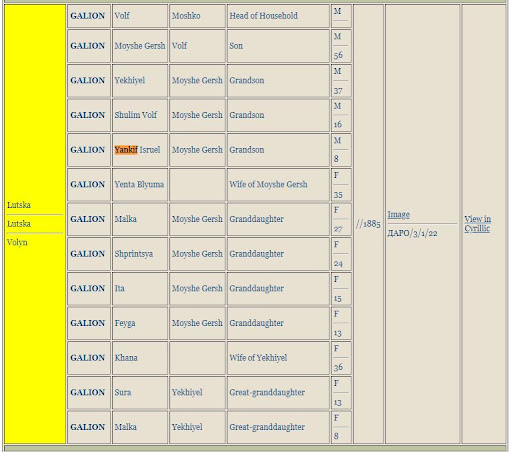Pasvalys, Lithuania (KHAIT, KRIGER)
Pasvalys, Lithuania
Surnames:
KHAIT, KRIGER
Jewish Population:
1897: 1,590 (60% of 15,780 population)
Family Members:
Yudel Khait, Husband of 2nd great-Aunt (Brother-in-law of Celia Kriger)
(also Grandson of Bensel Khiat)
B 1869 Pasvalys; M Asna Kreiger; D 1933 Tel Aviv
Extended family of Kriger's and Khiat's lived in Pasvalys.
History:
Pasvalys is situated on a hill with the river Posbolka at its feet. A railway connects Pasvalys with Birzai. Prior to World War I there were about 400 Jewish families in Pasvalys; there were also a few Karaite families there, remains of a former Karaite settlement.
During World War I, in April 1915 the Jews were exiled into the interior of Russia; not all of them returned at the end of the war (1918). In 1921 there were 525 Jews in Pasvalys; in 1923 - 748.
In independent Lithuania between the two World Wars there was a prayer house in Pasvalys and a Hebrew school of the "Tarbuth" network. Among the local rabbis rabbi Eliahu Benjamin, son of rabbi Dov Dimand was known for changes he made in the life of the Jewish community. The last officiating rabbi was rabbi Yizhak Agolnik.
Most of the Pasvalys Jews were in trade, only a few worked as artisans or were peasants. There were two weekly market days in Pasvalys. The local Jewish bank had 159 members. Many of the Pasvalys Jews emigrated to the Americas or South Africa.
Prior to World War II there were about 700 Jews in Pasvalys.
THE HOLOCAUST
On June 26, 1941, four days after the German attack on Soviet Russia the Germans entered Pasvalys. Already the next day a number of Jews were arrested. On July 4 greater number of Jews were arrested and sent to prison in Siauliai.
After a time the Germans left Pasvalys in the hands of nationalistic Lithuanians who took over the town and executed the orders of the Germans.
In the middle of July 1941 a ghetto was instituted at the end of two streets and all the remaining Jews assembled there. The Lithuanians looted the Jewish possessions; the head of the local council took money and valuables from the Jews under false pretenses. The ghetto was supplied by the local council; the rabbi headed the shop in the ghetto. The ghetto Jews were exposed to the brutalities of the Lithuanian guards.
At the end of July and beginning of August 1941 the Jews from the surrounding towns were brought to the Pasvalys ghetto.
On August 26, 1941 the Jews were ordered to assemble in the prayer house which was outside the ghetto; from there they were taken to the forest of Zadeikiai, 4 km from Pasvalys. On the way the Jews tried to overcome the Lithuanian guards; as a reprisal the guards murdered babies and brutally beat the adults. The Jews were forcibly dragged into the forest, shot and thrown into pits prepared beforehand. The Jews who were only wounded tried to escape during the night and were shot by the Lithuanians who were waiting for them. Only one woman escaped from the massacre and later testified.
On that day 1,349 Jewish women, men and children from Pasvalys and the environs were murdered and buried in a mass grave.
https://kehilalinks.jewishgen.org/pasvalys/
https://www.jewishgen.org/Communities/community.php?usbgn=-2617762
https://dbs.bh.org.il/place/pasvalys
https://www.jewishgen.org/databases/yizkor/yizkor.php?townid=1248
Sites:
- Pakruojis, Lithuania Wooden Synagogue
-




Comments
Post a Comment